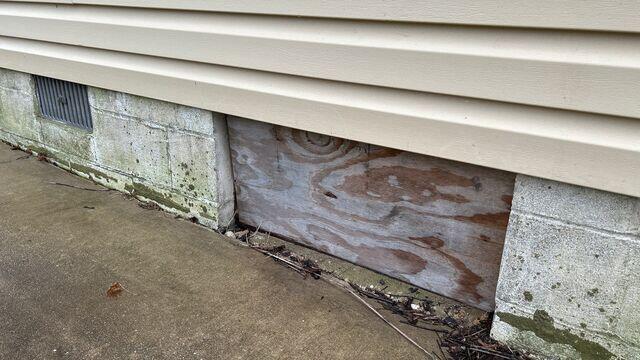
Vent and access
You can see clearly the outside air is vented into the crawlspace, exposing the foundation and wooden structural components supporting the floors above to the ambient humidity and extreme temperatures.
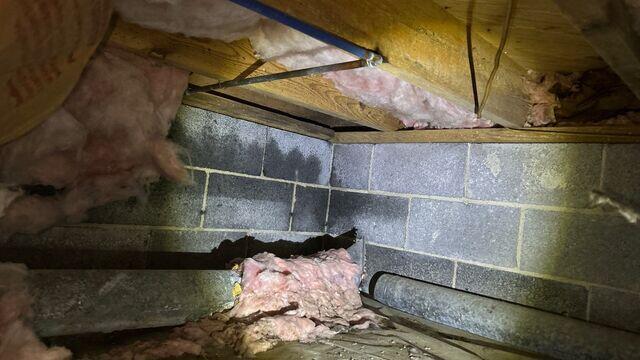
Insulation FAIL!
Traditional crawlspaces are insulated by putting fiberglass batts in between the floor joists, against the underside of the floor deck. Over time this insulation becomes damp, heavy, and soggy, and falls away from the subfloor deck, leaving it exposed to harsh outdoor air temperatures and humidity. No wonder this home has cold floors. The insulation is GONE!

A home for bugs, animals and birds
Unsealed crawlspaces provide a home for living creatures, who often die, then rot and decay in there. Wonder why your home suddenly smells like something dead? If you have a traditional ventilated crawlspace this could be why.
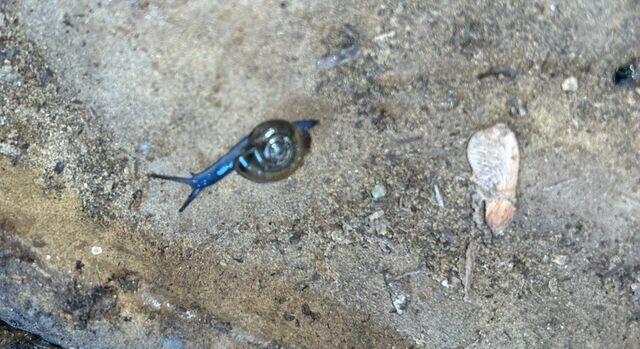
Plant debris and moisture, a restaurant for all kinds of creatures.
Snails cannot survive in dry conditions. There are many other similar creatures who are drawn to unsealed, ventilated crawlspaces. Do you really want to share you home with these intruders? YUCK!
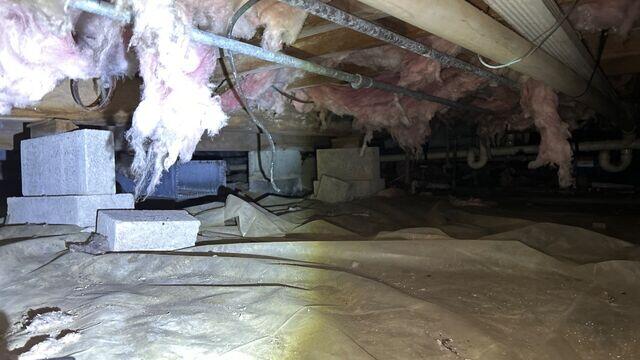
More floor insulation FAIL!
This home has to be chilling in the wintertime. Basically the occupants are standing on wood that is trying to become the same temperature as the outside air on any given day.
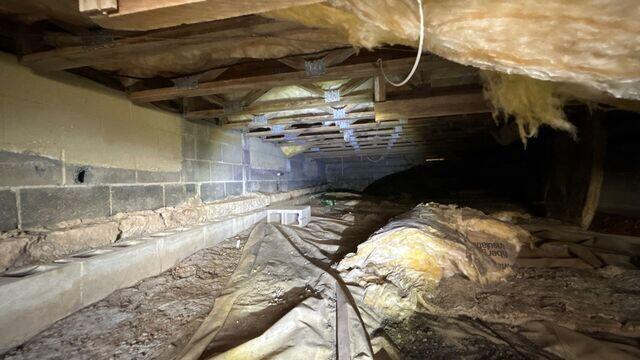
Exposed dirt floors
Although at sometime in the past strips of plastic sheeting were laid on the ground to protect the crawlspace from ground moisture and soil gasses it does absolutely no good. Often careless workers rip it and tear it, or pull it off the ground. And in addition the moisture goes right around the seams, and even right through the thin plastic.
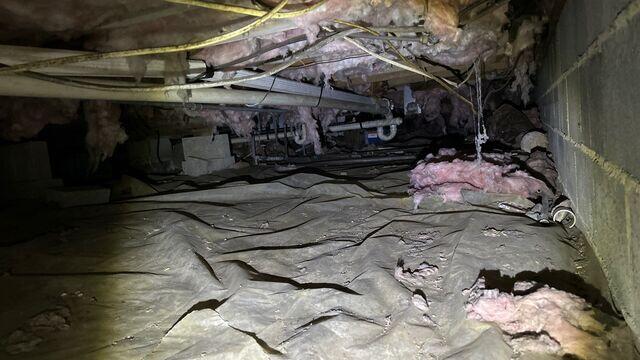
More insulation FAIL!
Gravity always has its way when you try to put insulation up against the crawlspace "ceiling", leaving the wooden floor deck above it totally exposed to humidity and extreme outdoor temperatures.
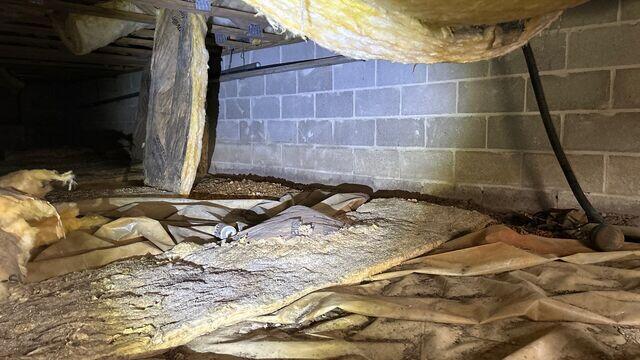
More and more insulation FAIL!
This house is indeed in bad shape. When the floors become cold so do the rooms. Their heating bill must be astronomical in the winter months. Then in the summer, heat and humidity, along with the stench of the crawlspace and all the dead stuff in it, works its way up through the floors and gets into the wall cavities above. You don't even want to know what goes on when that happens - but you can imagine - it gets really NASTY!
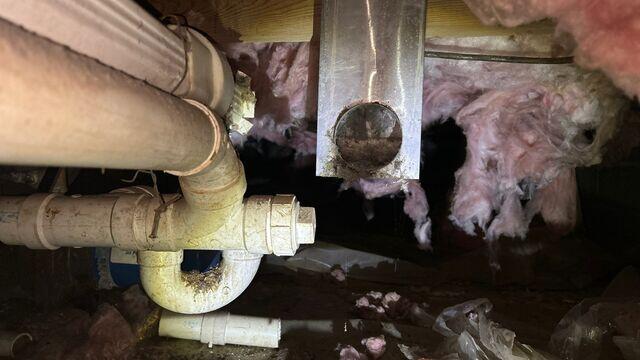
Dryer vents into crawlspace
A terrible idea! But we see it all the time - a dryer vented into the crawlspace. Where do you think all the moisture that came out of the clothes in the dryer ended up? Thats right, in the crawlspace. And what you think happens to that moist air when it hits something cool? Just like when you moist breath hits your glasses, it condenses into water droplets. That moisture then gets absorbed into the wooden floor structures - causing microbial growth which can lead to the development of mold and eventual wood rot - an expensive fix, not to mention the health hazards to young developing children and the elderly.
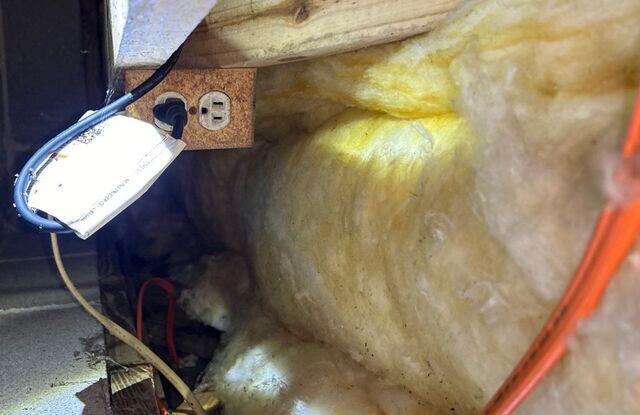
Moisture in the electrical receptical
What do you suppose will eventually happen to this rusty electrical receptacle - which supplies power to the heat tape that keeps the pipes from freezing in the winte? You won't know until it's too late, usually on the coldest day of winter. Plumbers charge double to go into a wet and frozen crawlspace to fix a burst pipe.
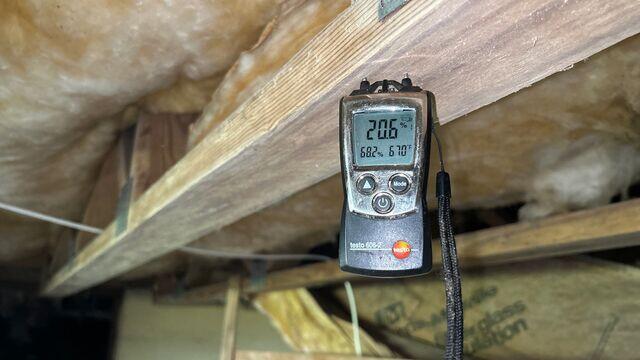
High Moisture Content - 20.6%
This "Hygrometer" is used to test the moisture content of the wood. Ideally it should be somewhere around 10-12%. Above that and you start getting microbial growth which will eventually lead to wood rot and structural failure of the floor joists. $$$$$$$

